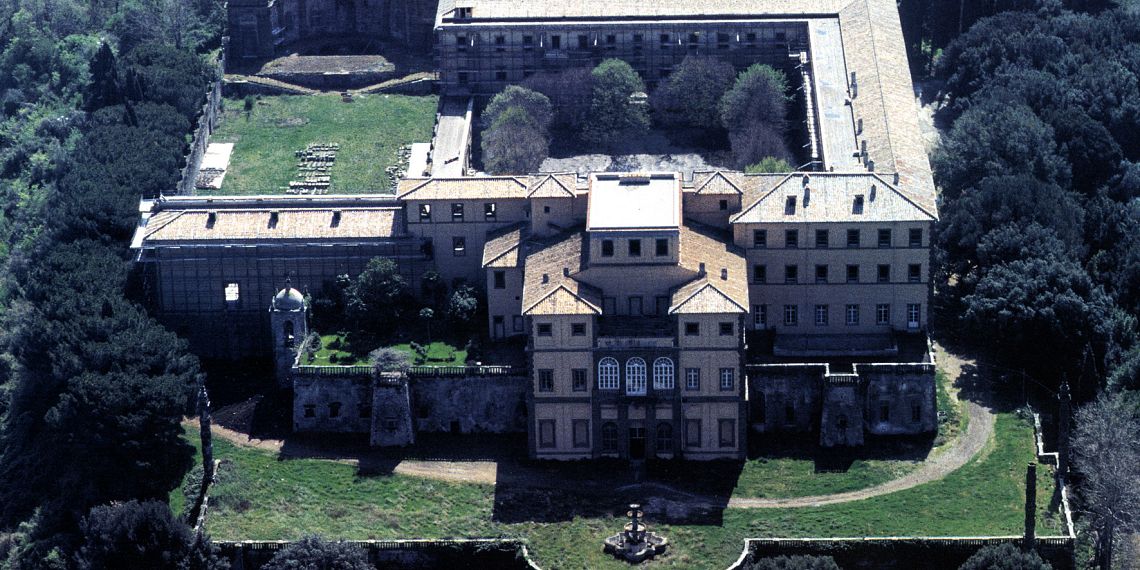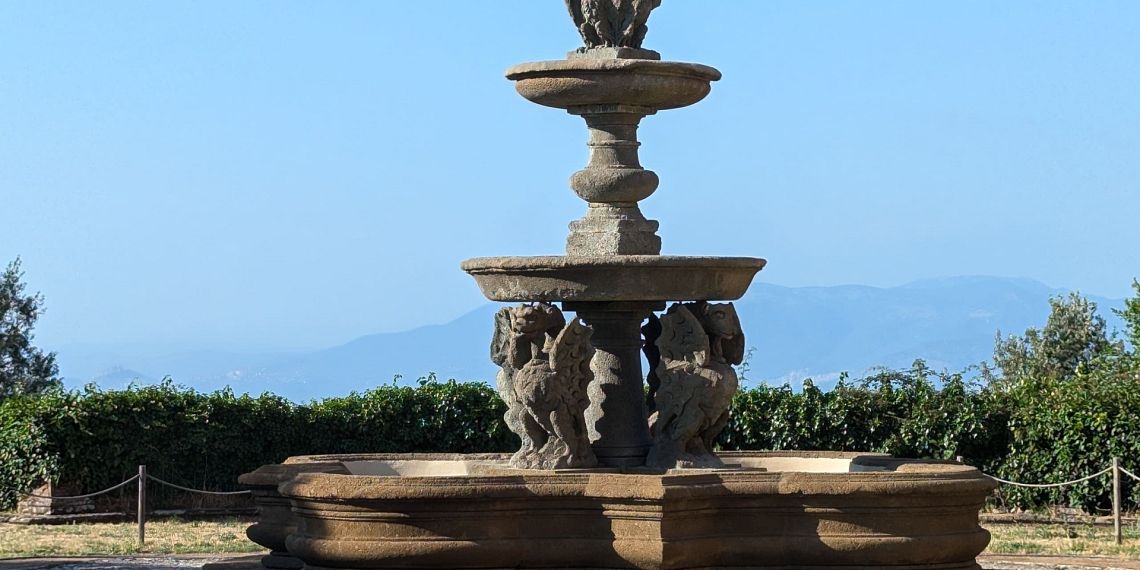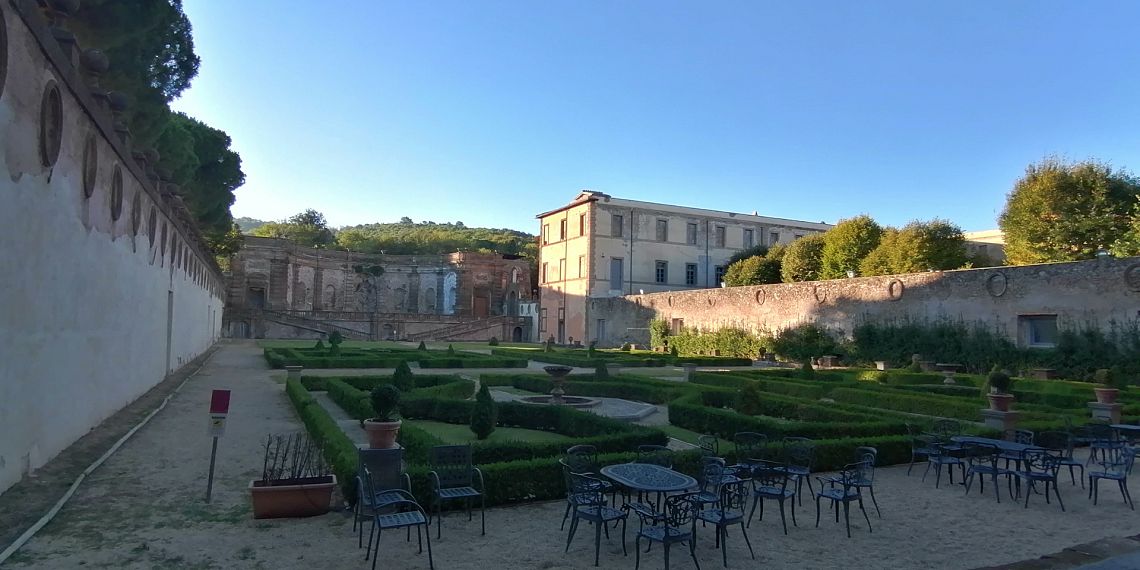Venue
THE STORY
The Villa Mondragone complex stands on a hill in a happily panoramic position, facing Rome. Situated between Frascati and Monte Porzio Catone, the municipality of which it is part, the Villa is surrounded by an enchanting park of 18 hectares.
Situated on the ruins of an ancient Roman villa belonging to the Quintili family, it was built between 1573 and 1574 by the young Cardinal Marco Sittico Altemps, nephew of Pope Pius IV Medici, to host the papal court of Gregory XIII. The latter gave the name “Mondragone” in reference to the winged dragon, the heraldic symbol of Gregory XIII’s family, the Boncompagni, used as a decorative element in the palace and garden. The villa is the work of the Altemps family’s architect, Martino Longhi the Elder of the Vignola school, who, at the Pope’s suggestion, built a new imposing building on the hill above, using the Roman ruins of the Quintili residence as substructures, although with a different orientation. The Villa has many large rooms, some of which are richly decorated. Among all of them, the majestic Sala degli Svizzeri stands out. Although it has no decorations, it is known for having been the setting for an important historical event: the Reform of the Julian Calendar desired by Pope Gregory XIII himself, who here promulgated, in 1582, the famous Papal Bull “Inter gravissimas”.
In 1613, Cardinal Scipione Borghese, nephew of Pope Paul V, purchased Villa Mondragone and other properties from Duke Gian Angelo Altemps and between 1616 and 1618 began significant expansion work conducted by the Flemish architect Jan van Santen, known as Giovanni Vasanzio, Cardinal Borghese's trusted designer. These works involved both the building block, expanded with the connecting gallery between the Casino del Longhi and the Retirata, the small residential building built for the son of Cardinal Altemps, and the exterior with the Large Garden, the portico, the Teatro delle Acque and the large quadrangular courtyard that recalls the cour d'honneur of the royal residences of France. It was the summer residence of the popes until 1626 when Urban VIII, having ascended to the papal throne, moved it to Castel Gandolfo marking the beginning of a progressive decline of the entire complex of the Tuscolane Villas and in particular of Villa Mondragone.
In 1866, it was purchased by the Society of Jesus who restored its prestige by first placing the foreign headquarters of the Ghislieri college there and subsequently an important educational institution, the Nobile Collegio Mondragone, a boarding school for the offspring of high-ranking families. In 1929, the architect Clemente Busiri Vici designed and directed the works of expansion and internal renovation of the Villa, also creating the so-called "new gallery" which today, after the functional adaptation works and the enhancement activity carried out by the IRVi.T. and has taken the name of "Galleria Gregorio XIII". In 1981, the Villa was sold by the Society of Jesus to the University of Rome Tor Vergata which, after initial refunctionalization works, made it the representative headquarters of the University and the ideal place for organizing various events.
Source: https://www.irvit.it/show-item/villa-mondragone/








